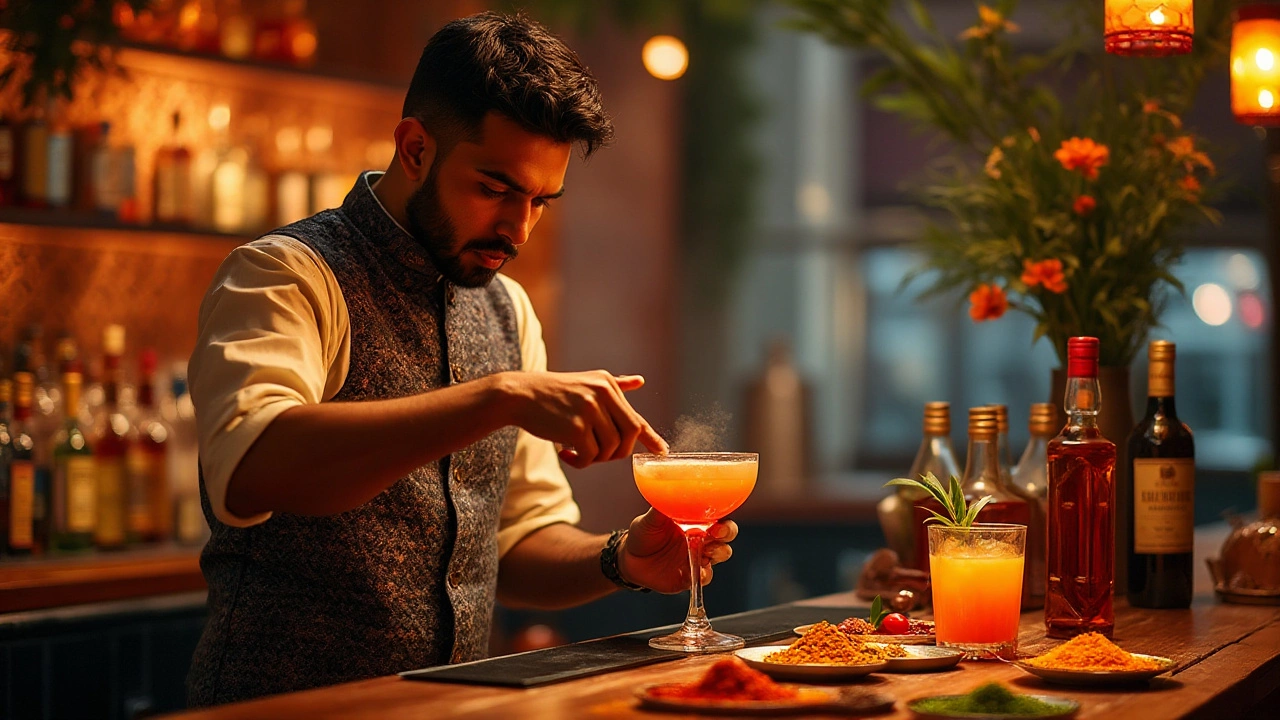
There's something undeniably magical about a well-crafted cocktail. It's an experience that begins before the first sip, with the clink of ice against glass and a dash of bitters cutting through the noise of the bustling bar. But what makes a cocktail truly stand out? Is it the ingredients, the technique, or perhaps the ambiance that surrounds its creation?
In this exploration, we're setting out to discover what might be the tastiest cocktail in the world. While tastes are subjective, there are certain cocktails that have reached near-mythical status among enthusiasts and casual drinkers alike. From the timeless elegance of a classic Martini to the adventurous spirit of a contemporary fusion, each has something unique to offer.
Join us as we uncover the secrets behind these liquid masterpieces, offering recipes, tips, and a glimpse into the culture and creativity that define the world of cocktails. Whether you're a seasoned mixologist or someone simply eager to expand your palate, there's a delightful, delectable cocktail waiting to be discovered.
- The Art of Cocktail Making
- Classic Cocktails and Their Timeless Appeal
- Modern Twists on Traditional Favorites
- Regional Cocktails and Their Unique Flavors
- Tips for Perfecting Your Own Cocktail Creations
- The Future of Cocktails: Trends to Watch
The Art of Cocktail Making
The journey of crafting the perfect cocktail is both an art and a science. At its core, cocktail making is about balance and harmony among ingredients, where each plays a vital role in creating a flavor profile that resonates with the palate. The seasoned bartender approaches this task much like a painter with a blank canvas, understanding that each cocktail tells a story, not just in taste but in its presentation and history. Whether it's the crisp notes of a Martini or the robust flavors of a Negroni, each sip should transport the drinker.
To start, it's essential to understand the building blocks of cocktail recipes. Traditionally, this involves the triad of spirit, mixer, and garnish, yet within these components lies a world of possibilities. The spirits form the backbone, while mixers like juices, sodas, or syrups add body and depth. Garnishes, though small, provide the aromatic appeal that often completes the experience. In recent years, bartenders have taken inspiration from chefs, experimenting with molecular gastronomy techniques or using homegrown herbs and fruits, to elevate their creations.
"A great mixologist acts as both an alchemist and an artist, turning ordinary liquids into extraordinary experiences." - Dale DeGroff, known as the 'King of Cocktails'
The tools of the trade are as crucial as the ingredients themselves. A well-stocked bar might include essentials like a shaker, strainer, jigger, and muddler. These tools enable the precise measurements and mixing techniques needed to achieve the perfect blend. For instance, the shaker can aerate one drink while chilling another, providing a refreshing texture that is hard to mimic otherwise. Mastery of these tools allows bartenders to manipulate temperature and dilution, which, in turn, affects the flavor and feel of the cocktail.
The art doesn't end with mixing. Presentation is key in the world of cocktails. A beautifully garnished drink served in an elegant glass can elevate the drinker’s experience, making the visual as memorable as the taste. The choice of glassware echoes the intended vibe of the drink, whether it’s a sophisticated coupe for a Martini or a rustic tumbler for a more robust concoction. This attention to detail extends to garnishes, where a zest of citrus or a delicate flower can add that finishing touch.
The Science Behind Flavor Balance
Understanding the science behind flavor balance can transform a good cocktail into a great one. The interplay of sweetness, acidity, bitterness, and alcohol strength must be meticulously adjusted to achieve that delicate harmony known only to well-crafted cocktails. This often involves understanding the subtleties of each component; for instance, the natural sweetness found in freshly-squeezed lemon juice might differ vastly from that in a lemon-flavored syrup. Balancing these flavors requires an acute understanding and often a touch of creativity.
While tradition holds its value, innovation continues to push boundaries in cocktail making. Today, mixologists explore new ingredients and fusion techniques, embracing the global pantry as their inspiration. The aim is to create a sensory experience that resonates with audiences around the world, each cocktail telling a story unique to its creation. As much as we honor the classics, this era of experimentation is what truly defines the burgeoning culture of cocktail craft.
Classic Cocktails and Their Timeless Appeal
When it comes to classic cocktails, their charm lies in their simplicity and the stories they carry from a bygone era. These drinks, with their harmony of flavors and textures, have endured the test of time, offering us a sip of history with every glass. Take the Martini, for instance, synonymous with sophistication and the eternal companion of icons like James Bond. Its appeal rests in its precise balance, a dry elegance that’s difficult to surpass. Interestingly, the origins of the Martini remain a mystery, steeped in both intrigue and myth, a fitting prelude to its allure.
Another stalwart in the classic lineup is the Old Fashioned, believed to be one of the original cocktails and, arguably, the tastiest cocktail for those who appreciate the deeper notes of whiskey. With simple ingredients like sugar, bitters, and a splash of water, it invites the spirit to stand center stage, undisturbed by frills. This cocktail is best served in a lowball glass, over a single large ice cube, which melts slower, enhancing the drink’s lasting flavor.
"The Old Fashioned is not just a drink, it’s a statement," remarked bartending legend Jerry Thomas in the 1800s. "It reminds you of the importance of tradition."
Many classic cocktails also bring with them an air of geographical romance. Consider the Margarita, with its tangy lime, sweet orange liqueur, and the earthy essence of tequila. Its exact birthplace is debated, splashed across various accounts from Tijuana to Texas, but its mark on pop culture, especially in sunlit, coastal settings, is undeniable. The Margarita touches that perfect balance of sweet, salty, bitter, and sour, offering a picturesque scene of blue skies and ocean breezes.
Then there’s the Negroni, an Italian triumph known for its striking bittersweet symphony. Composed of equal parts gin, vermouth, and Campari, garnished with a twist of orange peel, it’s a fervent favorite in the cocktail community. Its vibrant ruby red color and complex taste make it a standing ovation in a glass. Legend has it that in 1919, Count Camillo Negroni, tired of watered-down cocktails, asked his bartender to spike his Americano with gin. The result was a revelation, now immortalized in cocktail lore.
The resurgence of appreciation for these beloved classic cocktails highlights a timelessness that many modern drinks can't replicate. Whether it's an evening at the local speakeasy or a quiet nightcap at home, these cocktails invite us to savor a moment, appreciate the craftsmanship, and bask in their storied past. They remind us of a time when drinks were not just about strong flavors but about embracing the art of balance and the joy of the ritual.
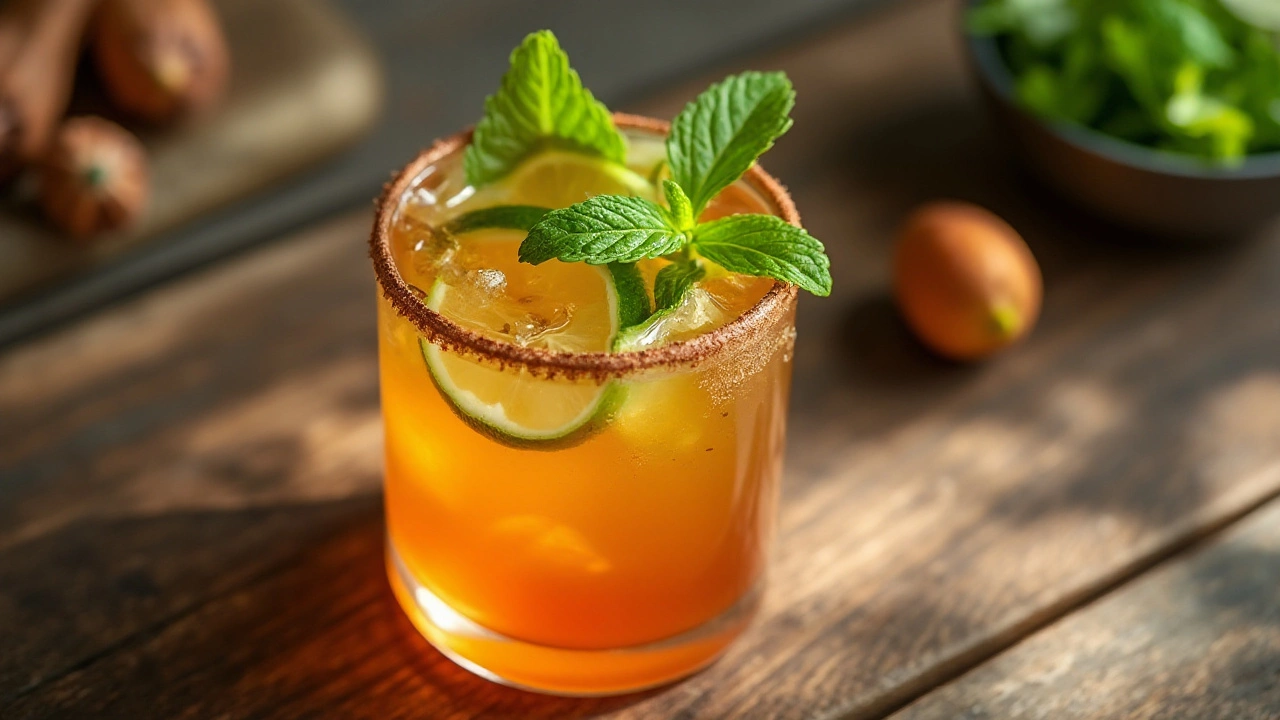
Modern Twists on Traditional Favorites
The world of cocktails is ever-evolving, a continuously whirling dance of flavors that beckons the adventurous spirit in all of us. One of the most delightful trends in cocktail culture today involves modern twists on time-honored classics. By reinventing these beloved concoctions, bartenders breathe new life into them, balancing nostalgia with innovation. Consider the classic Old Fashioned, a drink revered for its simplicity and elegance. To create a modern version, mixologists might experiment by incorporating unique bitters, such as cardamom or lavender, and topping it with a touch of smoked citrus. This not only elevates the taste but provides a sensory experience that begins long before the first sip, as the scent of smoke curls lazily through the air.
Another perfect candidate for reinvention is the iconic Margarita. Traditionally known for its crisp, refreshing combination of tequila, lime, and Cointreau, it offers a perfect canvas for experimentation. Some talented creators have chosen to infuse their Margaritas with jalapeño or add muddled berries for a burst of color and flavor that teeters on the extraordinary. A notable example from the industry features an infusion of hibiscus tea, reminiscent of warm summer evenings, lending not only a striking shade but a floral undertone that dances across the palate. Such playful twists can also extend to the garnish; a salted rim might be swapped for spicy Tajín to add an extra layer of complexity and a snapshot of personal innovation.
Then there is the Martini—a cocktail synonymous with sophistication—but in the hands of a modern mixologist, even this paradigm of purity can be seen through a new lens. A culinary artist might introduce elements like truffle oil or rosemary-infused gin to accentuate its earthy tones, creating a dynamic expression that challenges the drinker to reconsider their perceptions. "The beauty of cocktail making lies in its ability to surprise us," muses celebrated mixologist Ivy Mix in an insightful commentary on modern cocktail trends. She notes how the modern Martini might use sake instead of vermouth, shifting subtly without losing its distinctive core identity. Such experiments echo profound respect for tradition while embracing the nuances of contemporary palates.
These are not mere flights of fancy, but meticulous reimaginations born of an alchemy that is as much about passion as it is about precision. A contemporary Cosmopolitan might forego its cranberry juice origins for pomegranate molasses and pink peppercorn syrup, taking on an entirely new allure. Similarly, the tried-and-true Pina Colada sees renewed vigor with the incorporation of matcha or charred pineapple, elements that modernize the texture and complexity of this tropical classic. Mixologists are like painters with the freedom to explore colors far beyond the existing spectrum. With ingredients becoming more global, there is an influx of rare spices and artisanal spirits available, allowing a cocktail's evolution to coincide with the world's culinary curiosity.
In assessing these modern cocktail masterpieces, it becomes clear that while they pay homage to their roots, they are not constrained by them. Unlocking a cocktail's potential often involves treading the fine line between homage and innovation. This balance ensures that traditional values are not lost amid a sea of creativity but are celebrated and expanded upon. For those eager to try their hand at reinventing a beloved drink, the journey begins by understanding the essence of the original. From there, thoughtful additions or subtractions can lead to a new creation, a customized masterpiece perfectly tailored to its creator's imagination.
Regional Cocktails and Their Unique Flavors
When it comes to cocktail recipes, the world is a kaleidoscope of flavors, each region offering a taste that's reflective of its culture and identity. From the smoky allure of a Mexican mezcal-based drink to the refreshing tartness of a Thai-inspired creation, each cocktail tells its own tale of heritage and innovation. Regional cocktails not only delight the palate but also offer a window into the heart and soul of its people, making them a fascinating study for any cocktail enthusiast or cultural connoisseur.
Consider the iconic Pisco Sour from Peru. With its vibrant blend of Pisco, lime juice, simple syrup, and egg white, it captures the spirit and zest of its Andean origins. This classic punch has gained international acclaim for its delicate balance of sweet and citrus flavors, becoming a staple on cocktail menus around the world. Peruvian bartenders often claim, with a hint of patriotic pride, that no other drink could better reflect the nation's lively spirit.
Move across the globe to Japan, where the subtlety of a Yuzu Sour can be found. This cocktail is a tribute to the Japanese appreciation for seasonal ingredients, featuring Yuzu citrus that brings a unique, fragrant zest to the concoction. In the quiet elegance of a Kyoto bar, sipping a Yuzu Sour becomes an experience that transcends the ordinary, offering a silent nod to the intricate dance of flavors that Japanese cuisine and drinks are famed for.
In Italy, the Negroni reigns supreme. Its bold combination of gin, Campari, and sweet vermouth has been captivating hearts since its creation in Florence over a century ago. This cocktail is an embodiment of Italian flair, known for its bitter charm and striking red hue. The Negroni speaks a language of passion and tradition, often enjoyed as an aperitivo that invites introspection and conversation.
Reflecting on the Irish Coffee from the Emerald Isle, one is reminded of the warmth and hospitality that Irish culture radiates. Crafted from hot coffee, Irish whiskey, and sugar, topped with a silky layer of cream, this cocktail has a heartwarming history of rejuvenating weary travelers. Each sip of this comforting mix is akin to a gentle embrace, a reminder of the rustic charm that defines traditional Irish gatherings.
"A cocktail is not merely a drink; it is an experience that combines the art of balance and the pleasure of the senses," remarked a famous mixologist. Such words echo the sentiment found in these regional delights, each crafted with love and served with stories leading back through generations.
A glimpse into these regional cocktails is not only an exploration of ingredients and techniques but also an encounter with the cultural narratives that affirm our connections with different parts of the world. Each cocktail is a chapter of the vast storybook of international flavors, waiting to be discovered anew with every tasting.
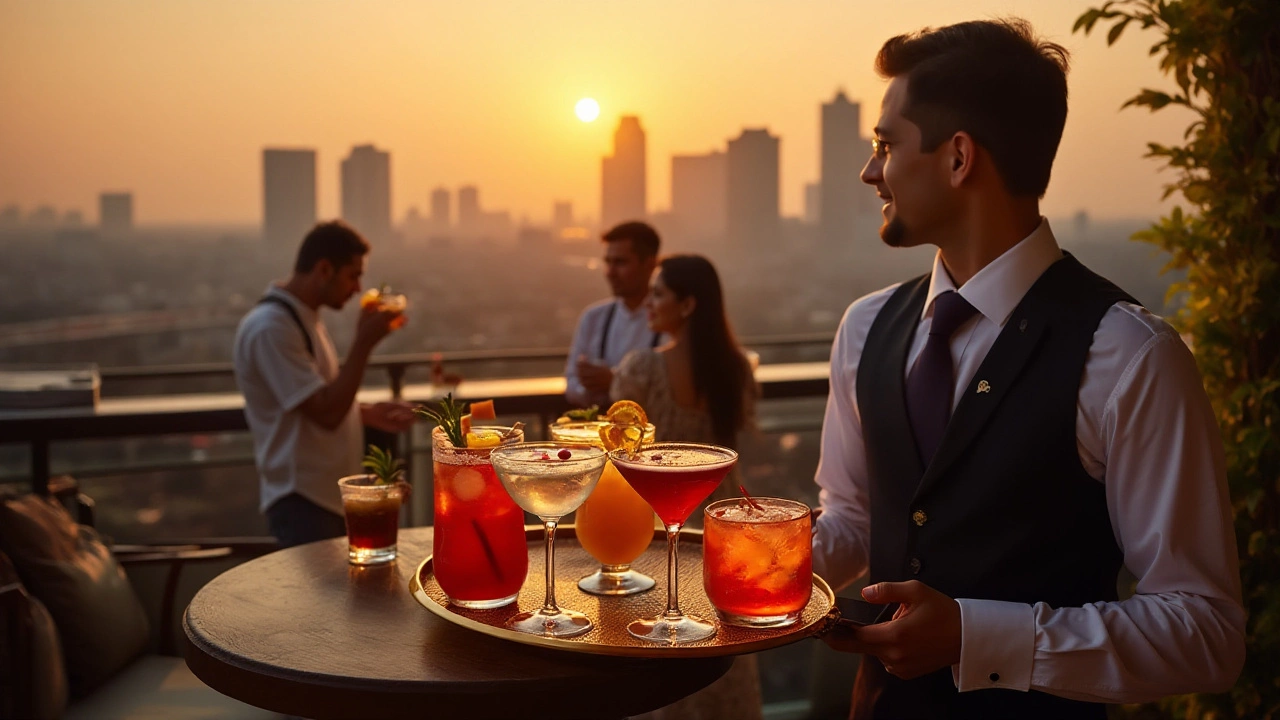
Tips for Perfecting Your Own Cocktail Creations
Crafting the perfect cocktail is much like painting a masterpiece; it requires a balance of creativity, skill, and a touch of science. As enchanting as it sounds, cocktail mixing is an art that anyone can master with a bit of practice and persistence. The first step in this journey is understanding the essential elements of a great cocktail: the base spirit, the mixers, the aromatics, and, of course, the garnish that brings it all together. Each component must be carefully chosen to complement the others, creating a harmonious blend of flavors and aromas that linger on the palate long after the first sip. Dive into the anatomy of your favorite cocktails to understand what makes them tick, and don't be afraid to experiment with new combinations.
A critical aspect of making a drink stand out is balance. Just as a symphony requires each instrument to play in sync, a cocktail needs its elements to dance together. The right balance of sweetness, acidity, strength, and bitterness is often what separates a good cocktail from a great one. A general guideline for achieving balance is the ‘2:1:1’ rule: two parts strong, one part sweet, and one part sour. This formula works well for many mixed drinks, but remember it’s just a starting point. Tweak the proportions to suit your taste. As the renowned mixologist David Embury once said,
"A cocktail should be a subtly harmonious blend of a limited number of ingredients, rather than a confused jumble of many."
Another vital factor is the quality of the ingredients. Just as a chef insists on fresh produce for culinary excellence, your drinks will only be as good as the spirits and mixers you use. Always opt for fresh juices instead of bottled ones, and choose herbs and spices with robust aroma and flavor. Do your research on the spirits you decide to include, understanding not only their dominant notes but also the less pronounced undertones that can make or break a mix. Keeping a well-stocked bar with a versatile range of spirits and mixers is a strategic move that prepares you for creating a spectrum of cocktails, from the classics to the more adventurous concoctions.
Of course, technique matters as much as ingredients. Stirring, shaking, muddling, and layering are just a few techniques that can alter the taste and presentation of your drink. Shaking is ideal for drinks that include citrus or egg whites, creating a frothy texture and thorough integration of flavors. Stirring, on the other hand, is best for spirit-heavy drinks, where maintaining the purity and clarity of the ingredients is vital. Practicing these techniques will eventually become second nature, leading to the effortless execution of even the most complex recipes. A little tip: always pre-chill your glassware. It helps maintain the chill of the drink longer, enhancing the overall sipping experience.
Let's not forget the importance of presentation. As they say, we taste first with our eyes. An artfully presented cocktail is more enticing and can heighten the enjoyment of the drink. Garnishes like a spiral of lemon peel, a sprig of mint, or even edible flowers can elevate a cocktail’s aesthetic and add subtle notes of flavor or aroma. Glassware also plays an important role. Depending on the type of cocktail, different glasses can enhance the drink’s bouquet or keep it at the perfect temperature. A delicate flute or a sturdy tumbler can say as much about the drink as the liquid itself.
The joy of cocktail crafting also lies in experimenting. While it's crucial to master the classics, don't hesitate to put your own spin on tried-and-true recipes or create original ones. Keeping a notebook to jot down successful combinations and tweak those that miss the mark can help refine your skills. Remember to keep an open mind and trust your palate. Sometimes, unconventional ingredients produce the most surprising and delightful results. Enjoy the process; each trial and error will only bring you closer to your signature cocktail, one that could very well be among the tastiest cocktails in the world.
The Future of Cocktails: Trends to Watch
The world of cocktails is ever-evolving, a delightful realm where creativity knows no bounds. As we gaze into the future of mixology, it's evident that the landscape is shifting towards sustainability, innovation, and an appreciation for regional flavors. The demand for sustainable practices is driving bartenders and cocktail enthusiasts to explore new avenues for reducing waste, utilizing local ingredients, and even crafting their own mixers and syrups.
One emerging trend is the zero-waste approach, where bartenders are using every part of their ingredients. This includes creating syrups from discarded fruit peels or using coffee grounds to infuse spirits, ensuring nothing goes to waste. As more people become environmentally conscious, such methods not only appeal to eco-friendly patrons but also bring fresh, inventive flavors to cocktails. Imagine sipping on a drink that balances the sweet essence of pineapple with the subtle bitterness of its rind.
Moreover, technological advancements are reshaping how cocktails are crafted and enjoyed. Virtual reality cocktail experiences, where patrons can immerse themselves in a themed environment while enjoying specially crafted drinks, are becoming more popular. These experiences push the boundaries of traditional cocktail enjoyment by engaging multiple senses. The infusion of technology with tradition offers a novel way to appreciate the craft, sparking intrigue and delight.
Cocktail historian David Wondrich aptly states, "Today, mixology is not just about what's in your glass, but the story and the experience that surround it."With this in mind, another fascinating trend is the elevation of storytelling within cocktail culture. Menus are evolving into narrative-driven adventures where each drink is accompanied by an anecdote or a piece of history, connecting the consumer more intimately with their chosen cocktail.
Health-conscious concoctions are also on the rise. As wellness trends permeate lifestyle choices, the demand for low-alcohol and alcohol-free cocktails, known as “mocktails,” is soaring. Crafted with the same dedication as their spirited counterparts, these drinks focus on bold, balanced flavors that cater to those who prefer their evening's indulgence without the effects of alcohol. Such options open the doors to cocktail culture for a broader audience, emphasizing inclusion and accessibility.
In the culinary world, regionalism plays an integral role, and this is increasingly true for cocktails. Mixologists are tapping into local flavors, incorporating indigenous herbs and spices to create unique profiles that celebrate a place's essence. This trend not only supports local economies but also celebrates cultural diversity, turning every cocktail into a passport to a new region's culinary delights. Imagine flavors like smoky mezcal paired with native Mexican botanicals for a truly immersive experience.
As we see, the future of cocktails is rich with potential, beckoning us to explore new flavors, embrace sustainable practices, and seek deeper connections with the drinks we love. With these trends emerging, there's a promise of discovering some of the best cocktails the world has yet to offer, ensuring that whether you're an aficionado or a casual sipper, there's always something new on the horizon.
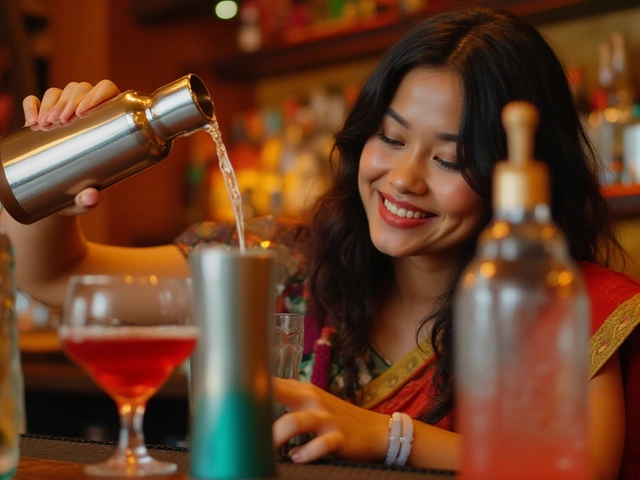

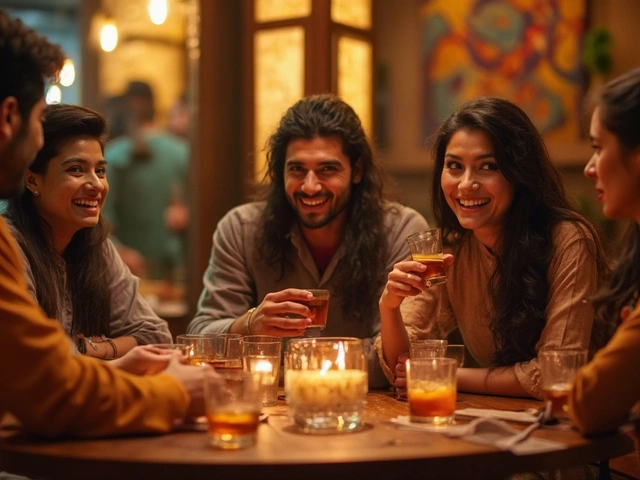
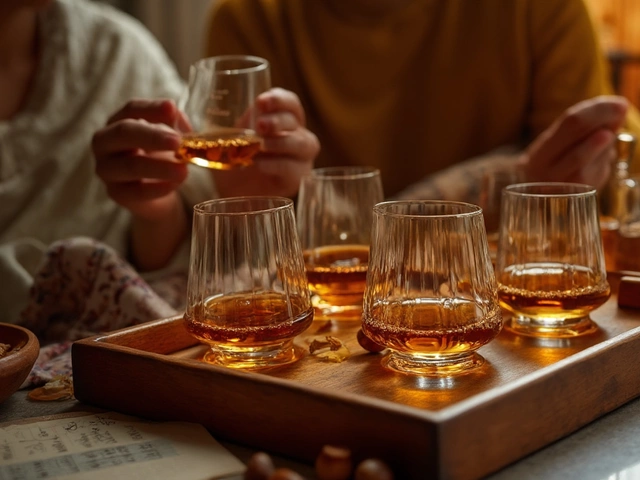

Categories